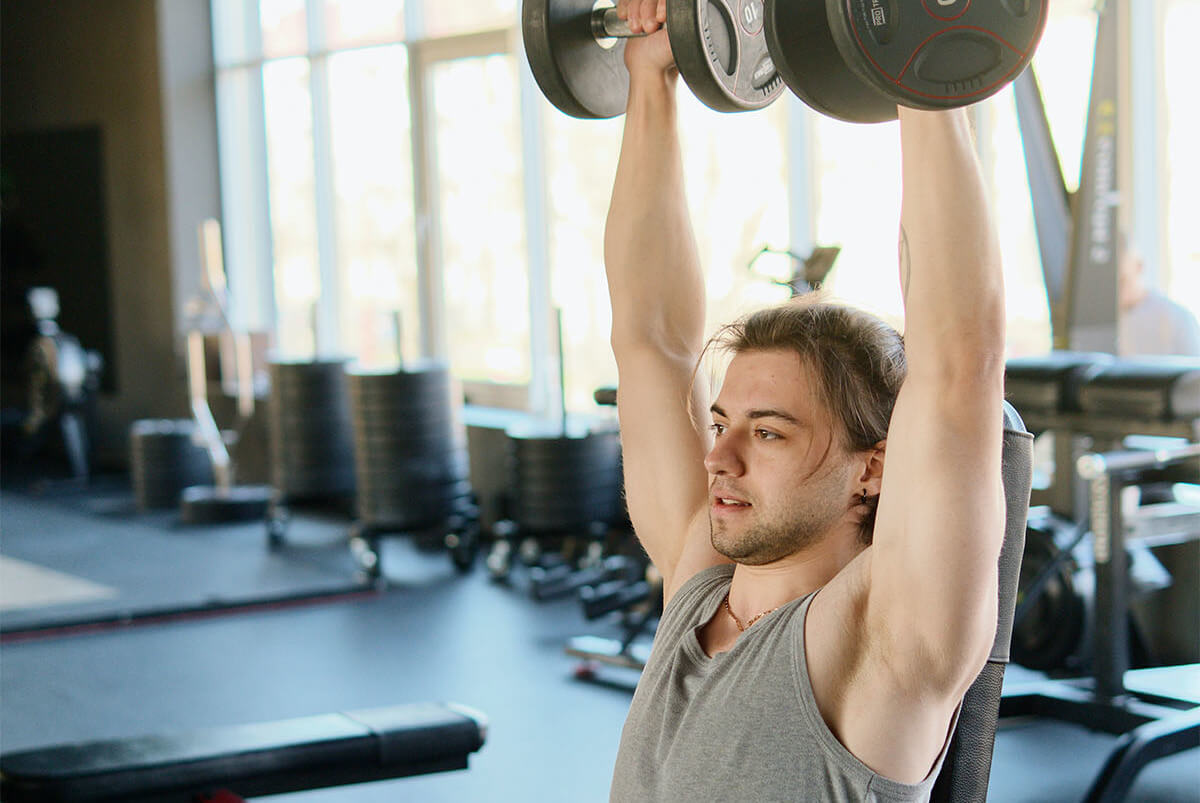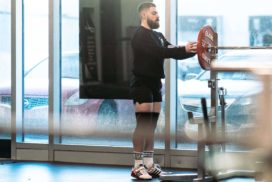How long a workout should last is regularly debated. There are some people who say that workouts should be 45 minutes long and others who say that 3 hours is more aligned with what they need.
Those who argue for shorter workouts, between 30 min-1 hour, usually reason that since cortisol increases after 1 hour of training and high intensity workouts do not require several hours to do, training efficiently for around 45 minutes is optimal for making gains.
Those who argue for longer workouts, around the range of 2½-3 hours, generally reason that high volume equates to more hypertrophy and ultimately more gains.
Both of these perspectives have some truth to them but neither of them can be collectively applied to every weightlifter since how long a workout needs to last depends on several different factors.
These factors are the intensity of the workout, how long you need to warmup, how long your rests between sets are, your lifting experience, the training split or program you’re on, and how susceptible you are to overtraining.
Intensity vs. Volume
Intensity and volume are both important for how long your workout should be. The higher the intensity of your training sessions, the less volume is needed. The higher the volume of your training, the less of a need there is for intensity.
Intensity
Intensity is the combination of your RPE (rate of perceived exertion), the amount of rest you take, your tempo, and how much weight you are lifting.
This review of 2 meta-analytic reports found that the intensity needed for building muscle varies based on wether you are a beginner, recreation lifter, or advanced weightlifter. Recreationally trained non-athletes obtained maximal strength gains at an average training intensity at 80% of their 1RM (1 rep max) while athletes elicited maximal strength gains at 85% of their 1RM.
Based on this evidence, the amount of time you’ve already spent weightlifting impacts the level of intensity needed to continue making progress. This isn’t new information and basically forms the basis for progressive overload.
While a new weightlifter can make good strength and muscle gains while exerting himself minimally, an advanced lifter needs to train at a higher intensity in order for his body to continue growing.
Since intensity and volume are adversely needed for hypertrophy, you always have the option of increasing the intensity of your training while keeping the volume the same to continue building muscle. This means you can keep the time duration of your workouts the same even after you’ve been working out for multiple years.
Volume
The intensity of your training is important, but there still are certain amounts of volume needed to build muscle even if you are lifting at peak intensity.
Volume is the amount of reps and sets you are doing spread across the number of days you are training per week.
Based on this meta-analysis of 15 studies, 10-15 sets, or 50-60 reps, per muscle group a week is the minimum range needed to achieve optimal hypertrophy. A positive trend between higher volume and more gains was noticed and groups that fell into the “lower volume” category did not get results as good as the other groups who did higher volume training.
With a standard of 10-15 sets a week for each muscle group, each individual workout should contain at least 10-15 sets total if you train using a push-pull-leg split. If you use an upper-lower split then each workout should consist of around 15-20 sets per training session to be in the optimal range.
Given that reps for most exercises take about 2-4 seconds to complete, and 8-12 reps per set is a good rep range for hypertrophy and strength gains, each set should take around 20-30 seconds to complete if you are working out at high intensity.
This means that, not factoring in warmup, cool down, and rest periods, the amount of time a workout should be is around 8 minutes. 5-10 minutes is the total amount of time you can expect to spend actually lifting.
Warmup & Rest between Sets
While 8 minutes is the amount of time you should spend actually weightlifting during a workout, there needs to be time in between sets for rest. There should also be some form of warmup prior to the training session so that the muscles can loosen up and get blood flow before the working sets.
Warmups
Different people need different amounts of time to warmup. While some only need to do a couple minutes of mobility training to get ready for weightlifting, others may find that they need several minutes of foam rolling along with mobility training and light resistance training before their workout. On average, around 5 minutes is what’s usually necessary to loosen the muscles being trained.
Rest Periods
For rest, how much time in between sets you need depends on the intensity of your training. More intensity means more time is needed between sets for the muscles to recover.
Research on how long rest periods in between sets should be favors longer rest periods during weightlifting. This study found that 3 minute long rests in between sets resulted in more strength gains and muscle than periods of rest that were 1 minute long. Another study on 36 men concluded that 3-5 minute long rests in between sets yielded significantly better results than 1 minute long rests.
Based on this evidence, rest periods should be at least 2 minutes and closer to 4 minutes if you are lifting heavy weights at a high RPE. If you are performing 10-15 sets per workout, the total amount of time you should spend on rest periods is around 30-45 minutes.
How Long Workouts Should Last For Different Training Splits
This table gives general lengths of time for each workout depending on the training split you are on.
The amount of time given per workout is a sum of the warmup, the time spent weightlifting, the time spent resting between sets, and an assumed 10 minutes extra of loading weight and going from one section of the gym to another.
| Training Split | Workouts per Week | Amount of Time per Workout |
| Push-Pull-Leg | 6 | 45 minutes-1½ hours |
| Upper-Lower | 4 | 1 hour-2 hours |
| Full Body | 2 | 2½ hours-3 hours |
Summary
The amount of time a workout should last depends on the intensity of the training, how long you take to rest in between your sets, your experience lifting, your training split, how much resistance training your body can handle, and the time you spend doing warmups and cool downs.
Most people can handle more training than they think and the efficiency of the workout is more important than the possibility of too much weightlifting being done.
If you follow a push-pull-leg split and workout 6 days a week, each workout should be around 45 minutes-1½ hours. If you do an upper-lower training split, each workout should be 1 hour-2 hours, and if you do a full body split, the workouts you are doing should be around 2½ hours-3 hours.
For more on training and building muscle, such as how much muscle you can to gain in 3 months and how to keep your gains while traveling, click here.








